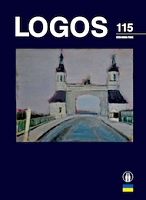Prasmingos ikimoderniosios architektūros samprata fenomenologų Harrio, Veselio ir Pérezo-Gómezo teorijose
The Concept of Meaningful Pre-Modern Architecture in the Theories of Harries, Vesely and Pérez-Gómez
Author(s): Kostas BiliūnasSubject(s): Architecture, Philosophy of Science, Phenomenology
Published by: Visuomeninė organizacija »LOGOS«
Keywords: meaning of architecture; reprezentation; Harries; Vesely; Pérez-Gómez;
Summary/Abstract: The article compares the theories of three architectural phenomenologists - Karsten Harries, Dalibor Vesely and Alberto Pérez-Gómez - who are acclaimed by their coverage of architecture from ancient times to today. The starting point of the theories is the meaningful architecture of pre-modern times, which was replaced by an objectified concept of architecture after the crisis of the Enlightenment. The authors under analysis define pre-modern architecture as a representation of an invisible layer of meaning, based mostly on the analysis of Enlightenment texts, Husserl's theory of the crisis of science and the phenomenological tradition. Two semantic structures are distinguished, related to exact meaning and sensory experience. The analysis of different historical epochs reveals the heterogeneity of meaningful pre-modern architecture.
Journal: LOGOS - A Journal of Religion, Philosophy, Comparative Cultural Studies and Art
- Issue Year: 2023
- Issue No: 115
- Page Range: 205-214
- Page Count: 10
- Language: Lithuanian

